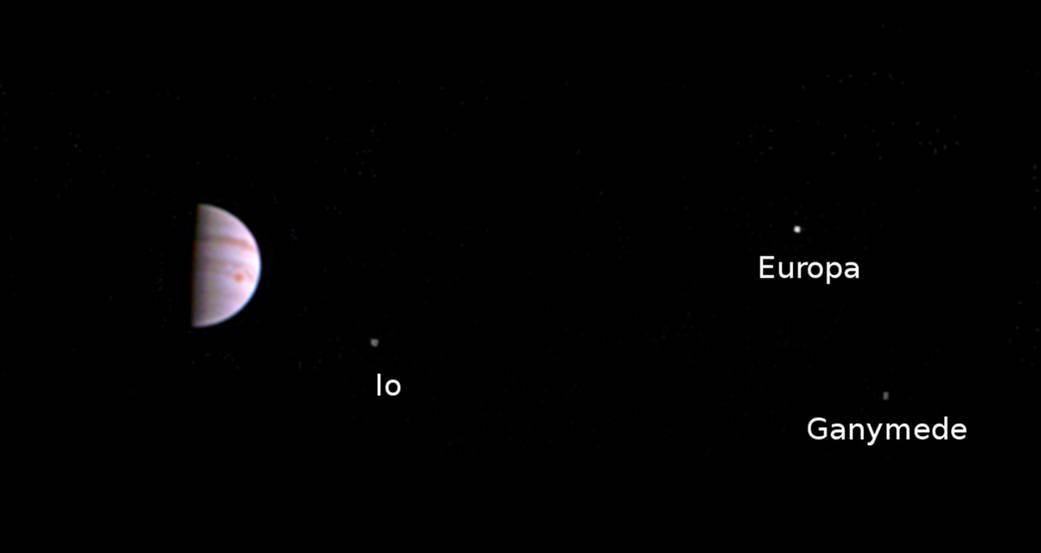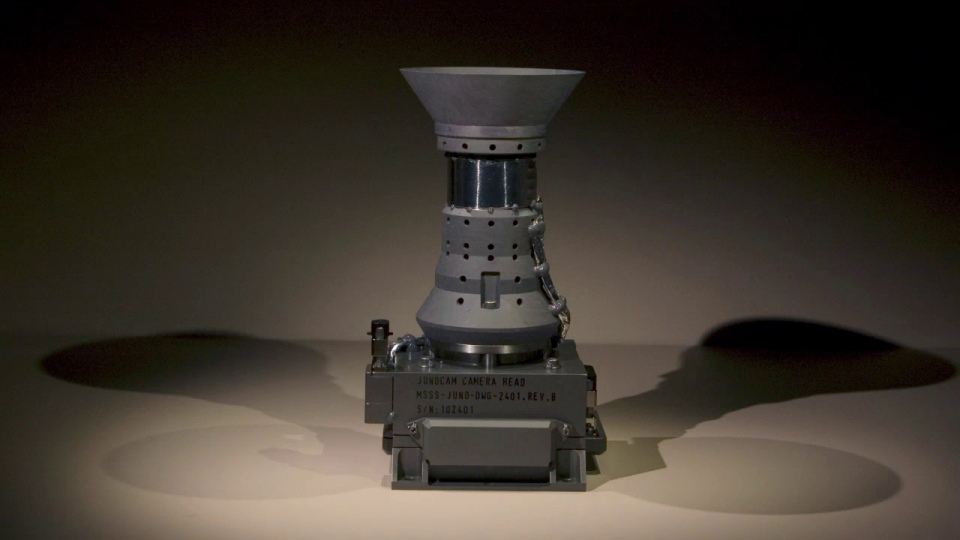 Jupiter and three of its four large moons taken by the JunoCam 7-10-16.
Jupiter and three of its four large moons taken by the JunoCam 7-10-16.A scientist from the Tucson-based Planetary Science Institute is responsible for the camera aboard the Juno spacecraft now orbiting Jupiter, and she is eager to see the first images.
Candice Hansen said the photography sessions can begin as soon as Juno's orbit brings it closer to the solar system's biggest planet.
"This is the first time that we will have this perspective on Jupiter’s poles,” Hansen said. “This is new territory. We’re hoping that it will turn out to be as dynamic as Saturn’s atmosphere."
Unlike previous probes of Jupiter, Juno is passing over the planet's north and south poles to learn more about the planet’s origins, structure, atmosphere and magnetic fields.
 JunoCam will image Jupiter's poles and other points of interested selected by the public.
JunoCam will image Jupiter's poles and other points of interested selected by the public.The camera is called JunoCam, and it is part of the NASA mission’s public outreach efforts. Amateur astronomers have been posting their own images of Jupiter to the mission’s website. Scientists will use those images to help decide where to point the camera.
The Juno spacecraft is headed back toward Jupiter after entering its orbit in July. The first several orbits are more than 50 days in duration. Shorter orbits commence this fall when Juno begins 14-day passes to conduct scientific experiments.

By submitting your comments, you hereby give AZPM the right to post your comments and potentially use them in any other form of media operated by this institution.